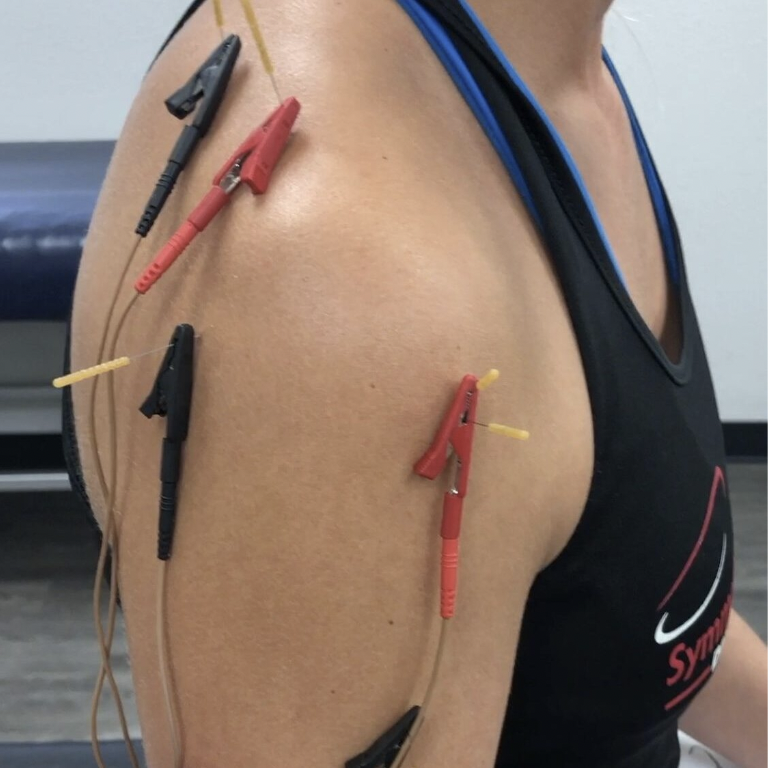Help! My Shoulder Hurts.
If you’re dealing with shoulder pain, especially related to your rotator cuff, you’re not alone. This type of pain can affect athletes, people with physically demanding jobs, and even those who spend most of their day sitting. The rotator cuff is made up of four small but important muscles—supraspinatus, infraspinatus, teres minor, and subscapularis—that help your shoulder move and stay stable. When these muscles are overworked, injured, or strained, it can lead to significant pain and make even simple tasks like lifting your arm difficult.
A treatment that is gaining a lot of attention for addressing rotator cuff pain is dry needling. When combined with strengthening exercises, it can help manage pain and improve shoulder function.
What is Dry Needling?
Dry needling is a technique where a thin needle is inserted into muscles to release tight spots called trigger points. These trigger points are areas of tension in the muscle that can cause pain and restrict movement. Unlike acupuncture, which is based on traditional Chinese medicine, dry needling is grounded in modern science and focuses on relieving musculoskeletal pain.
How Does Dry Needling Help with Rotator Cuff Pain?
Dry needling offers several ways to relieve shoulder pain and improve function:
- Releases Muscle Tension: By targeting trigger points in the rotator cuff, dry needling helps release muscle tightness, which can quickly reduce pain and improve your ability to move your shoulder.
- Boosts Healing Potential: The needle stimulates blood flow to the area, which can speed up the healing process by delivering more oxygen and nutrients to your muscles.
- Alters Pain Perception: Dry needling may help “reset” how your body interprets pain signals, reducing the intensity of pain and allowing you to move more freely.
Many patients report feeling less pain and more movement in their shoulder after just a few sessions of dry needling.
Combining Dry Needling with Shoulder Exercises
While dry needling can provide quick pain relief, it works best when paired with a well-planned strengthening routine. Together, these treatments can restore your shoulder’s strength and function over time. Here’s how dry needling and exercises can work together:
- Improve Range of Motion: After dry needling, when your shoulder feels less tight, it’s a great time to do gentle mobility exercises. Simple movements like shoulder circles or wall slides can help you maintain the newfound range of motion.
- Activate Shoulder Muscles: Once pain is reduced, it’s easier to engage the rotator cuff muscles in exercises like isometric holds (holding a position without movement) or banded external rotations.
- Strengthen Muscles Safely: As your shoulder feels stronger, exercises that focus on eccentric strength (slowly lowering a weight or band) are great for building up the rotator cuff without putting too much strain on it.
- Build Dynamic Stability: As you progress, we’ll incorporate functional exercises like overhead presses or scapular stability drills to help you regain full control and stability of your shoulder.
- Train Neuromuscular Coordination: Dry needling can also improve how your shoulder muscles work together. Exercises that challenge your coordination, such as planks or stability ball push-ups, will help your shoulder stay strong and pain-free in the long run.
Watch one of our recent videos on shoulder exercises here.
Take the Next Step in Your Shoulder Recovery with Physical Therapy in Gilbert
Dry needling offers an effective way to relieve shoulder pain, but it’s most successful when combined with a personalized rehabilitation plan. Together, we can reduce your pain, improve your strength, and get you back to the activities you love.
If you’re interested in learning how dry needling can help your shoulder pain, reach out today to schedule a consultation! Our physical therapy clinic in Gilbert is ready to help you feel better, function better, and live better.







